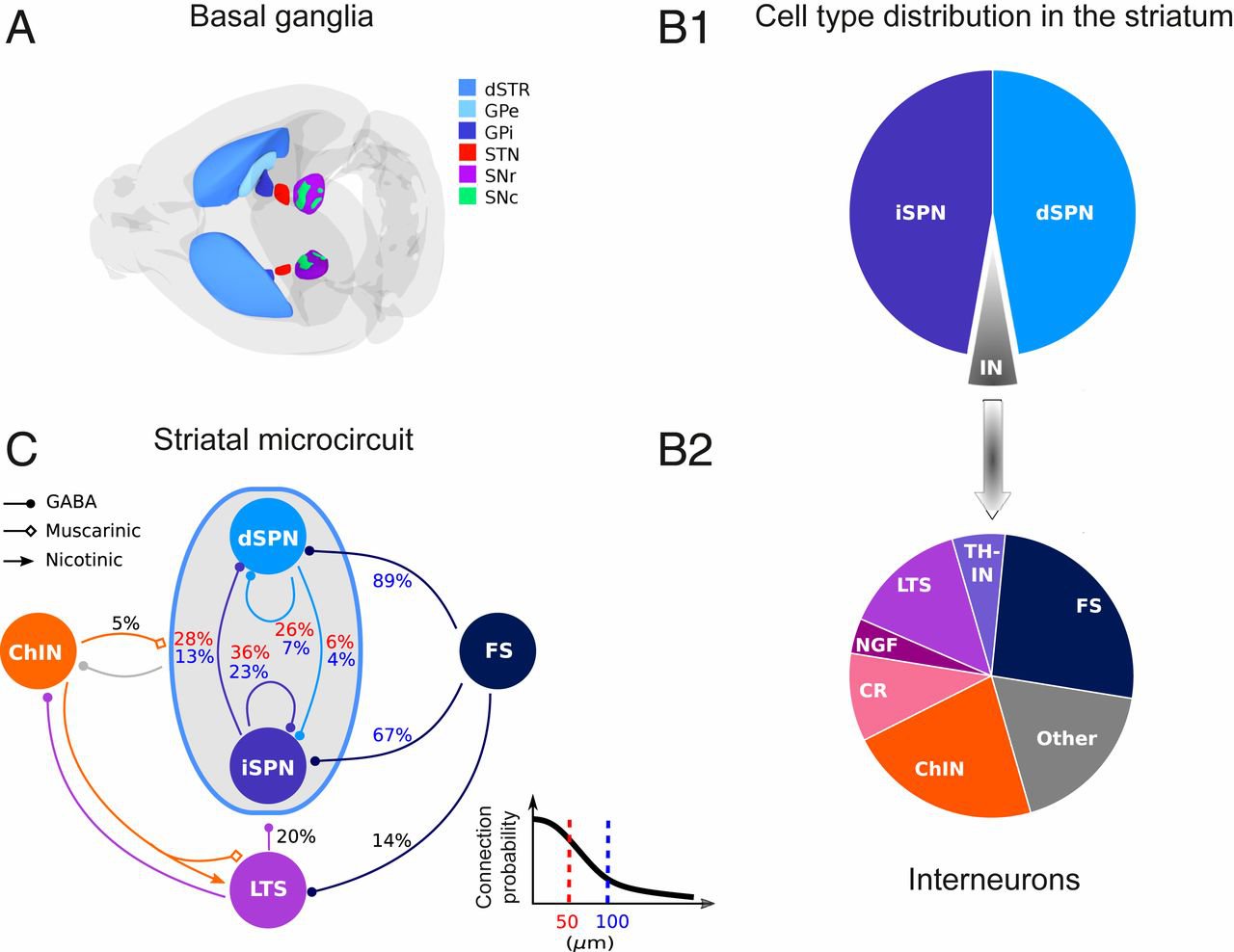The microcircuits of striatum in silico
06 May 2020

Organization of the striatal microcircuit and the neuronal subtypes.
The basal ganglia play an important role in decision making and selection of action primarily based on input from cortex, thalamus, and the dopamine system. Their main input structure, striatum, is central to this process. It consists of two types of projection neurons, together representing 95% of the neurons, and 5% of interneurons, among which are the cholinergic, fast-spiking, and low threshold-spiking subtypes. The membrane properties, soma–dendritic shape, and intrastriatal and extrastriatal synaptic interactions of these neurons are quite well described in the mouse, and therefore they can be simulated in sufficient detail to capture their intrinsic properties, as well as the connectivity. We focus on simulation at the striatal cellular/microcircuit level, in which the molecular/subcellular and systems levels meet. We present a nearly full-scale model of the mouse striatum using available data on synaptic connectivity, cellular morphology, and electrophysiological properties to create a microcircuit mimicking the real network. A striatal volume is populated with reconstructed neuronal morphologies with appropriate cell densities, and then we connect neurons together based on appositions between neurites as possible synapses and constrain them further with available connectivity data. Moreover, we simulate a subset of the striatum involving 10,000 neurons, with input from cortex, thalamus, and the dopamine system, as a proof of principle. Simulation at this biological scale should serve as an invaluable tool to understand the mode of operation of this complex structure. This platform will be updated with new data and expanded to simulate the entire striatum.
Further reading:
- Read the original publication here
- View the live paper here



